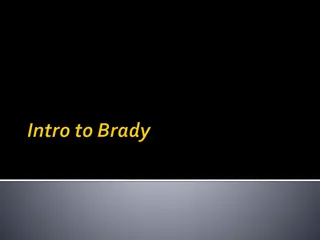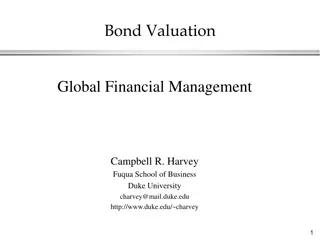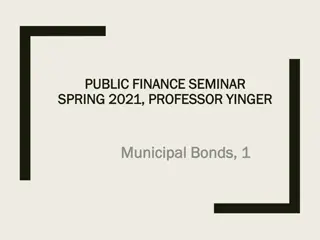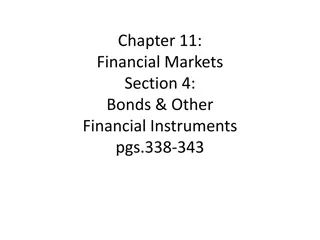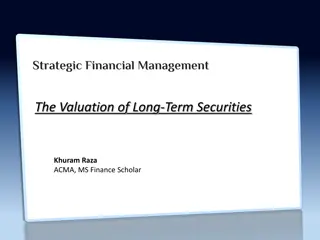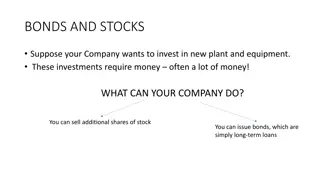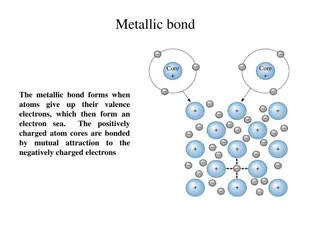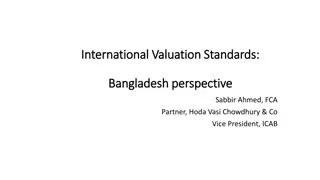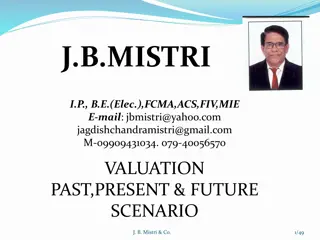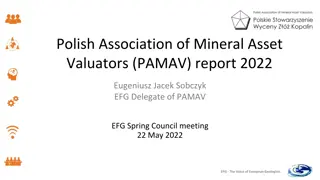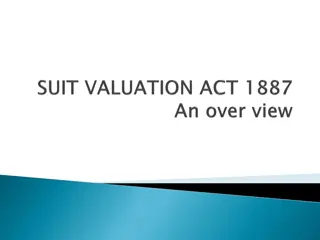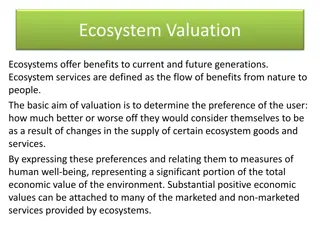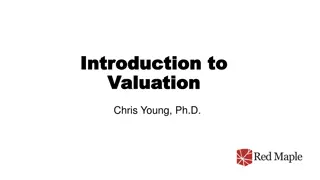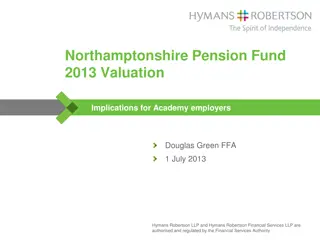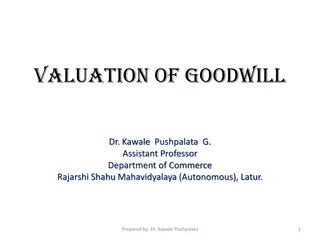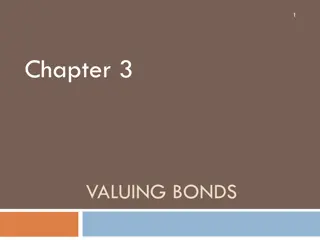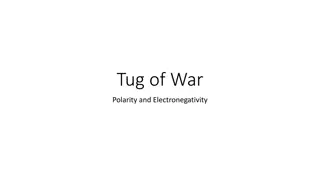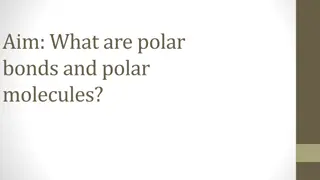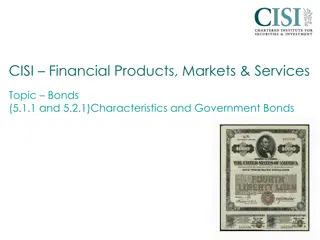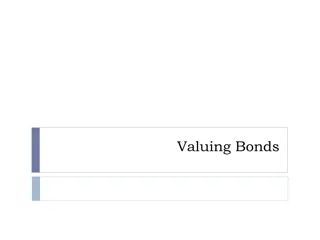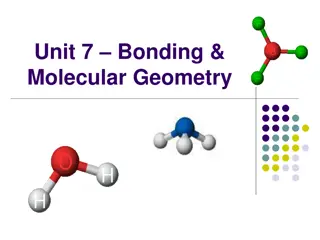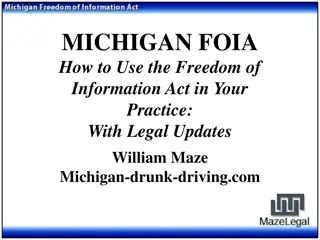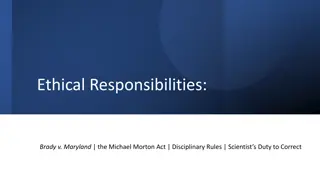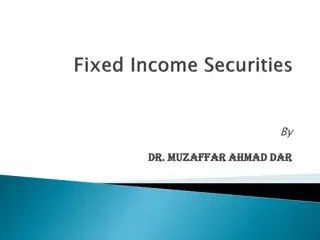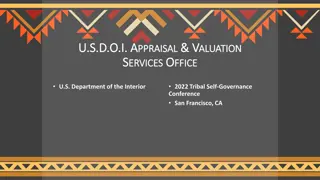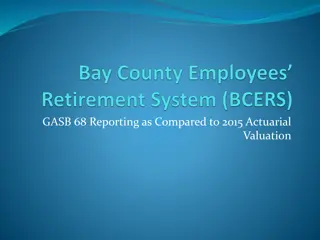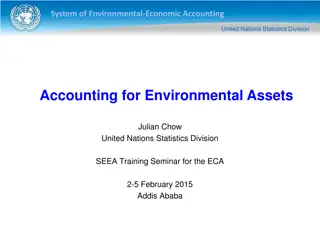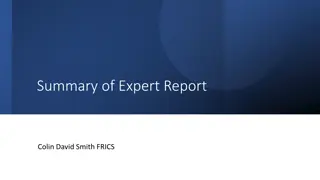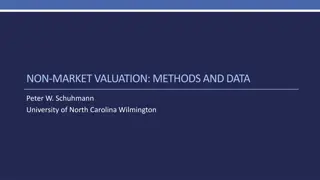Brady Bonds and Valuation Methodologies in International Finance
Exploring Brady Bonds introduced by Nicholas Brady in response to default crises in Latin American countries, focusing on valuation methodology, country ratings, and decision-making on purchasing Par or Discount Bonds in Mexico and Venezuela. Topics include cash flows, probability of default, discount rates, and country spreads.
Download Presentation

Please find below an Image/Link to download the presentation.
The content on the website is provided AS IS for your information and personal use only. It may not be sold, licensed, or shared on other websites without obtaining consent from the author. Download presentation by click this link. If you encounter any issues during the download, it is possible that the publisher has removed the file from their server.
E N D
Presentation Transcript
FINA 7360. International Finance. Spring 2018 Case 6. LN XIII LDC Debt and Brady Bonds By Joshua Armstead Eric Dietert Tatsiana Mikitsionak Tangen Tran
Outline Introduction of Brady Bonds Valuation Methodology Mexico Par/Disc Bond Valuation Venezuela Par/Disk Bond Valuation Opening Price of Costa Rican Principle Series A Bond Mexico s Country Risk Hedging options Will Mexico default?
Brady Bonds Due to the multiple default of Latin American countries in the 1980 s, Brady Bonds were introduced by Nicholas Brady. Brady Bonds gave options to banks as tradable instruments and are broken down in 3 segments: collateral accounts to guarantee principle, rolling interest on bonds to guarantee principle, and cash payments in context of paybacks. Mexico, Costa Rica, and Venezuela were the first countries introduced to Brady Bonds.
Valuation Methodology Bond Valuation Method: Brady Bond Required Inputs: 1. Cash Flows 2. Probability of Default 3. Discount rate 25%
Country Ratings Mexico - Debt Rating Venezuela - Debt Rating Costa Rica - Debt Rating
Valuation Methodology Brady Bond Cash Flows follow a simple binomial tree as shown above, where P is the probability at time t. It is necessary to get the discounted cash flows before calculating P.
Should Citibank buy Par or Discount Bond? Question 1 30Y Par Bond. Mexico ( March 1990) 30Y Discount Bond. Mexico (March 1990) Face Value= $100 Coupon Rate (Fixed)=6.25% Collateral: 30Y U.S. Treasury YTM=8.63% RG=18 months YTM Mexico=12.73% (Aver.1990-2016) Country Spread=4.10% Face Value= $100 Coupon Rate (floating) =LIBOR(8.35%)+13/16 Collateral: 30Y U.S. Treasury YTM=8.63% RG=18 months YTM Mexico=12.73% (Aver.1990-2016) Country Spread=4.10% Market Value = $40 NPV =$49.50 HPR = 23.77% Market Value = $60 NPV = $68.89 HPR = 14.81%
Should Citibank buy Par or Discount Bond? Question 2 30Y Par Bond. Venezuela ( December 1990) 30Y Discount Bond. Venezuela (December 1990) Face Value= $100 Coupon Rate (Fixed)=6.75% Collateral: 30Y U.S. Treasury YTM=8.63% RG=14 months YTM Venezuela=9.91% Country Spread=1.28% Face Value= $100 Coupon Rate (floating) =LIBOR(8.35%)+13/16 Collateral: 30Y U.S. Treasury YTM=8.63% RG=14 months YTM Venezuela=9.91% Country Spread=1.28% Market Value = $50 NPV =$55.83 HPR = 11.68% Market Value = $70 NPV = $72.96 HPR = 4.23%
What is fair value of the Bond? Question 3 20Y Principal Series A Bond. Costa Rica ( May 1990) Face Value= $100 Coupon Rate (Fixed)=6.25% RG=18 months YTM Costa Rica=10.5% Country Spread=3.87% NPV =$54.33 suggested price
Should Citibank Hold or Sell? Question 4 30Y Par Bond Mexico (November 1996): Diversification?: Face Value= $100 Coupon Rate (Fixed)=6.25% Collateral: 30Y U.S. Treasury YTM=8.63% RG=18 months YTM Mexico=12.73% (Aver.1990-2016) Country Spread=4.10% Remaining Coupon Payments = 47 E[NPV] = $61.97 Bid Price = $71.50 SELL! Given U.S Rate DVBP for Mexican Brady Bonds DVBP = Dollar Value of Basis Point Par Bonds = 8.48 1% increase in U.S. treasury yield, Mexican Brady Bond price decreases by 8.48% Brady Bond Price highly dependent (correlated) to U.S. treasury rates
Country Risk Estimation. Mexico Quantitative Method: Question 5 Country RIsk (CR) influences the interest on the debt issued by a government of a country CR (spread/risk premium) over a base (U.S. risk- free rate) CR = YTMUMS- YTMU.S. treasuries Example: UMS YTM = 11.375% U.S. 10-Year bond YTM (2003) = 4.05% CR = 7.325% or 732 bps
Hedging Options Question 6 Possible Hedging Strategies: Put Option: Collar Spread Covers downside risk with a lower cost Adds an upside restriction on returns Credit Default Swap Secures expected interest payments through maturity Expensive coverage because of the riskiness of the bonds Cost Opportunity - Time the swap purchase to align with the highest tolerable default risk level Cover the downside risk of the bond Low liquidity, meaning wide spreads and execution difficulties - Use OTC method
Probability of Default Question 7 Current Level of Risk for a Mexican Default Real GDP growth: 2.3% (2016 Actual) Inflation Rate: 3.4% (2016 Actual) External debt/GDP: 39.4% (2016 Actual) Default history: No default events (on bonds or loans) have been recorded since 1983 A Moody's study from March shows that an agreement for a successfully revised NAFTA treaty would support a slight acceleration in Mexico's growth in 2018-19 to 2.0%-2.5% annually.


